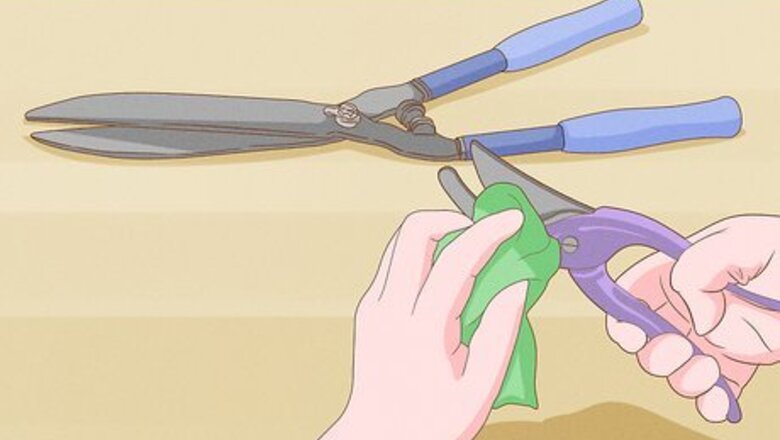
views
Maintenance Pruning Techniques
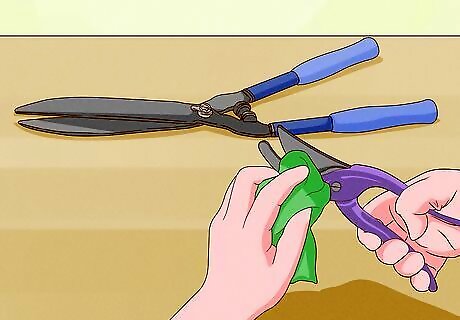
Use clean pruning shears for general maintenance pruning. A good pair of one-handed pruning shears will cut through red robin branches with ease. While hedge clippers are a quicker option for large-scale trimming and shaping, hand pruners offer convenience and precision for trimming off damaged areas, removing spotted leaves, and cutting wayward branches. While the red robin isn’t particularly prone to disease, it’s a good idea to sanitize your shears regularly to reduce the risk of plant-to-plant disease transmission: After pruning one red robin, rinse any dirt off the shears with water, then wipe down the pruners with rubbing alcohol (isopropyl alcohol, 70% minimum). After each pruning session, use dish soap and water to clean and rinse the pruners, soak them in a solution of 4 fl oz (120 ml) of chlorine bleach and 32 fl oz (950 ml) of water for 30 minutes, then rinse the shears and let them air dry.
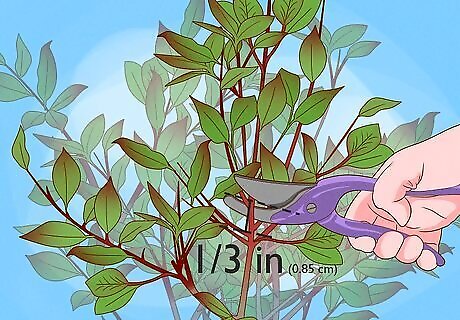
Make an angled cut just above a new shoot or bud on the branch. Hold the branch steady with your free hand, about 6 in (15 cm) above the cutting point. Cut through the branch about ⁄3 in (0.85 cm) above an existing shoot or bud to promote new growth. Make the cut at approximately a 45-degree angle. Cutting at an angle instead of straight across also promotes new growth. If you want to completely remove an entire branch, make your cut about ⁄3 in (0.85 cm) above where the branch attaches to the main stem. Be careful not to damage the stem.
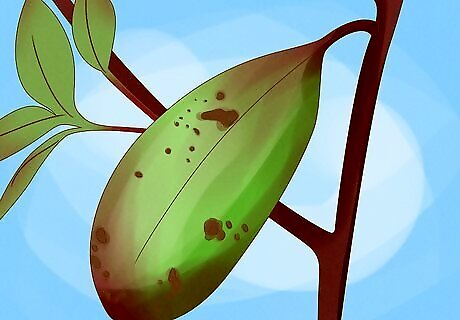
Cut away foliage with “leaf spot” as soon as you see it. If you see dark red or brown spots on any leaves, snip the branch off at a bud or shoot below the affected area as soon as you can, especially during the growing season. While “leaf spot” is often more of a cosmetic issue than a threat to the red robin’s health, spotted leaves can fall off and leave significant bare spots in some cases. With quick pruning, the areas that had leaf spot are likely to be replaced with healthy foliage fairly rapidly, at least during the growing season. Frequent cases of leaf spot may mean that the red robin is planted in an area that is too damp, too cold, too shady, or some combination of these. Transplanting the red robin to a different spot may be your best option.
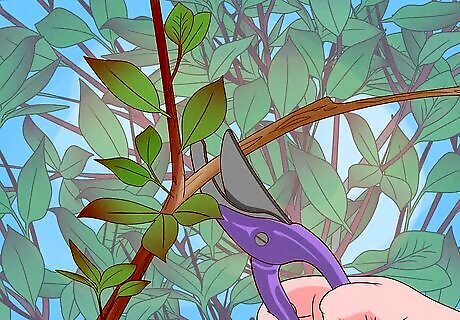
Snip away broken or dead branches at any time during the year. Since red robins are robust plants that can handle pretty much any type of pruning, general cleanup pruning can be done whenever you choose. Use your pruning shears to snip off broken branches, cutting just above a new bud or shoot when possible. Remove dead branches near the stem. If you prune anytime between the start of the growing season and 1-2 months before it ends, new growth will likely occur at the pruning site. Otherwise, expect new growth to begin the following season.
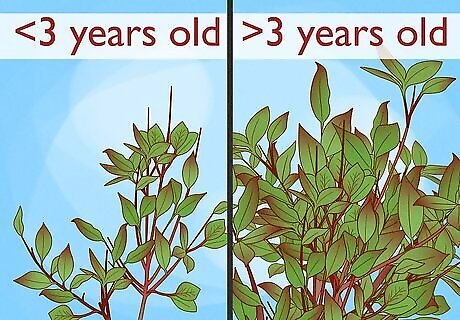
Stick to maintenance pruning until the plant is 3 years old. Red robins grow relatively slowly early on, so your specimen is unlikely to get out of hand during these early years. Delaying any significant pruning allows the red robin to get well established; after that, it can stand up to pretty much any kind of pruning! If you’re not sure how old a red robin is, avoid pruning it until it’s roughly 4 ft (1.2 m) tall and equally wide. This is based on the recommendations that you shouldn’t prune a red robin by more than 50% in size, and also shouldn’t prune it down below 2 ft (61 cm) in height and width.
Pruning for Foliage and Flowers
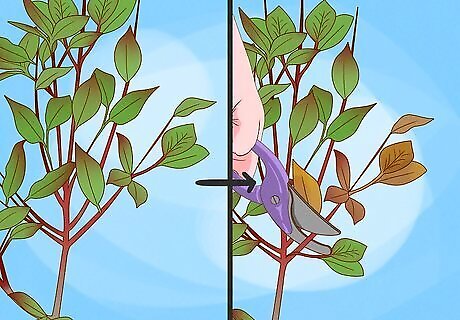
Prune to spur more red foliage about a month into the growing season. Over the span of several weeks, the bright red leaves that appear at the start of the growing season will fade to bronze and then green. Once a significant portion of the foliage has faded to bronze, use pruning shears to cut back the branches by up to 6 in (15 cm), snipping just above new shoots or buds. Another round of red leaves will emerge! For the best results, use the maintenance pruning technique with hand shears. Even if you use hedge clippers and make less precise cuts, though, you’ll still spur additional red foliage with timely pruning. In the UK, for example, the red robin’s growing season runs from about late March to late September. In this case, expect the first wave of red foliage to fade during mid-to-late April. Do your first pruning at this time to encourage more red leaves.
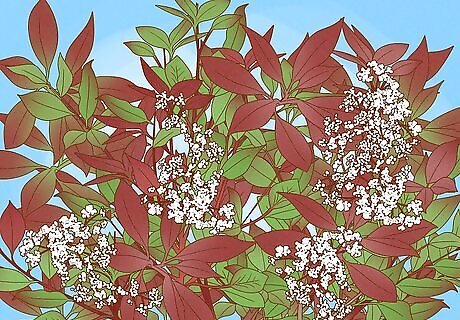
Delay your first seasonal pruning until after the flowers wilt, if desired. Red robins produce small white flowers that look pretty but don’t smell all that great, so ample flowering may not be your priority. If you do want to encourage flowering, hold off on your first pruning of the growing season, delaying it by about 4-6 weeks. If you prune off the flowers before they fade, flowering may be limited or absent the following season. If the growing season begins in late March, the flowers may not begin to fade until late May or early June. Instead of pruning to encourage red foliage in late April, then, wait about another month if you want both more red foliage now and more flowering next growing season.
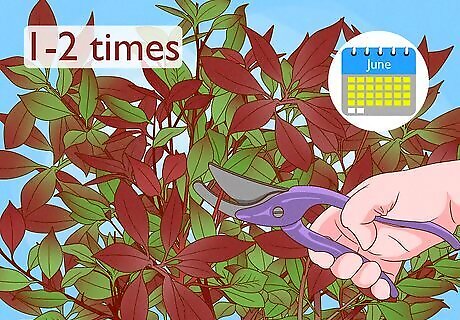
Do 1-2 more foliage prunings, but not during the season’s last 4-6 weeks. By spacing out several prunings, you can maintain an abundant supply of red foliage throughout the growing season. However, don’t prune for foliage during the last 4-6 weeks of the growing season, especially in a cold climate, since the new growth will likely be damaged by frost. If, for example, the red robin growing season is late March to late September where you live, you might prune to encourage red foliage in late April, mid-June, and early August. If you want to encourage flowering as well, move the first pruning back another month or so and do only 1 additional pruning for foliage.
Shaping Hedges or Bushes

Use manual or electric hedge clippers to make shaping much quicker. While hand-pruning with shears is the best option for foliage and flowering, the red robin is rugged and handles trimming with manual or electric clippers quite well. Hedge clippers are the obvious choice if you’re shaping several red robins into a continuous hedge, for instance, and also work well for shaping a single bush. So long as you don’t reduce its overall size by more than 50%, it’s extremely difficult to permanently damage or kill a red robin through pruning or clipping. Wear eye protection and thick gloves if you’re using electric hedge clippers, and follow all the safety precautions. Never put your fingers near the blades while the clippers are plugged in or the battery is engaged!
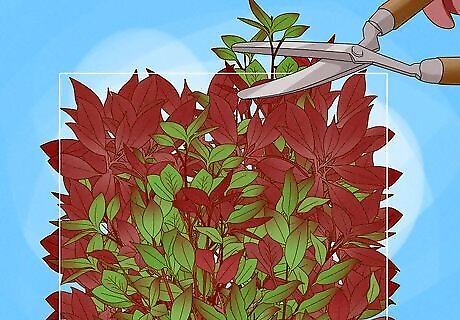
Cut right through the branches wherever it suits your shaping goals. If you want a row of squared-off hedges, for example, run your electric hedge clippers right along the tops of the red robins, cutting them straight and flat. Don’t worry about cutting below new buds or shoots; red robins recover well regardless and new red foliage will emerge fairly quickly. Red robins are great for shaping precisely because they’re so forgiving when it comes to pruning. Go ahead and try shaping a single red robin into a cone, sphere, square, or even more complex and creative shapes!
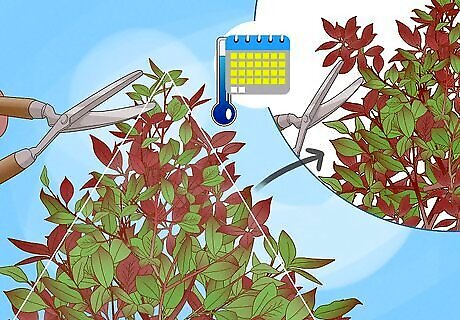
Shape at the height of the growing season for the quickest recovery. If you wait until about 4-6 weeks after the start of the growing season—for example, early May if the season starts in late March—new red foliage will emerge more quickly after pruning for shape. Shape your red robins 1-2 more times during the growing season as desired, but let them go during the last 4-6 weeks of the season to prevent frost damage to new growth. If you want to encourage flowering the following season, wait until the current flowers start to wilt before pruning for shape.
Hard Pruning for Size Reduction
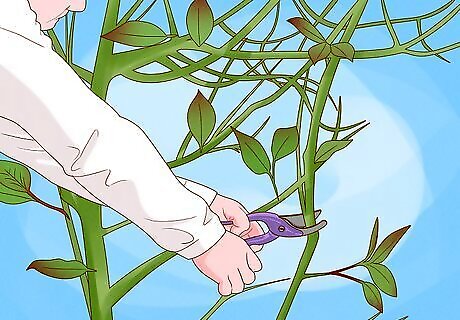
Schedule the “hard pruning” about 4-6 weeks into the growing season. A hard pruning is basically a major haircut for shrubs. Red robins respond well to hard pruning throughout the growing season, but respond best when the “haircut” occurs during the most aggressive period of growth. This usually happens about 4-6 weeks after the start of the growing season—for instance, late April or early May if the season starts in late March.
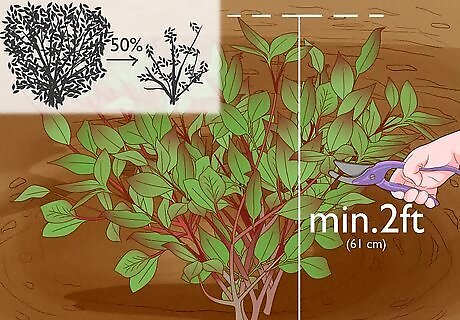
Prune down the shrub by up to 50%, but leave it at least 2 ft (61 cm) tall. Red Robins can reach about 13 ft (4.0 m) in height, which means that you can give a fully-grown shrub a hard pruning down to about 6.5 ft (2.0 m). That said, if the shrub is already smaller than 4 ft (1.2 m) in height, don’t cut it down to below 2 ft (61 cm). Your red robin may still recover if you give it a more severe hard pruning than these guidelines suggest, but don’t bet on it.
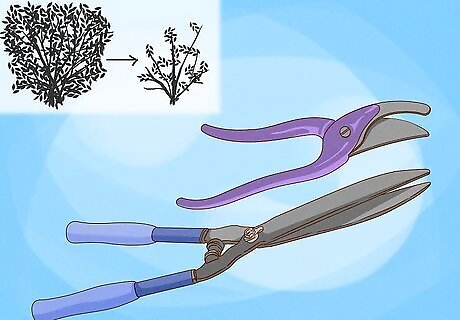
Use hedge clippers or pruning shears for hard pruning. Hedge clippers are usually the quickest and easiest option here, since you can simply cut through the branches for shaping however you like. If you prefer using pruning shears, go ahead and cut back each branch right above a new shoot or bud in order to better stimulate new foliage growth.
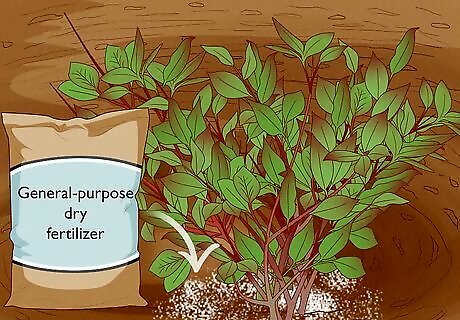
Feed the plant with a general fertilizer after a hard pruning. While a red robin bounces back well from pretty much any kind of pruning, it never hurts to give it a good feeding afterward. Apply a general-purpose dry fertilizer to the soil surrounding the main stem, according to the product instructions. After fertilizing, add enough water to moisten the soil, but don’t feel like you need to completely soak it—red robins require little watering after their first year.














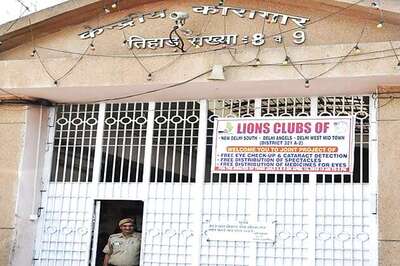





Comments
0 comment